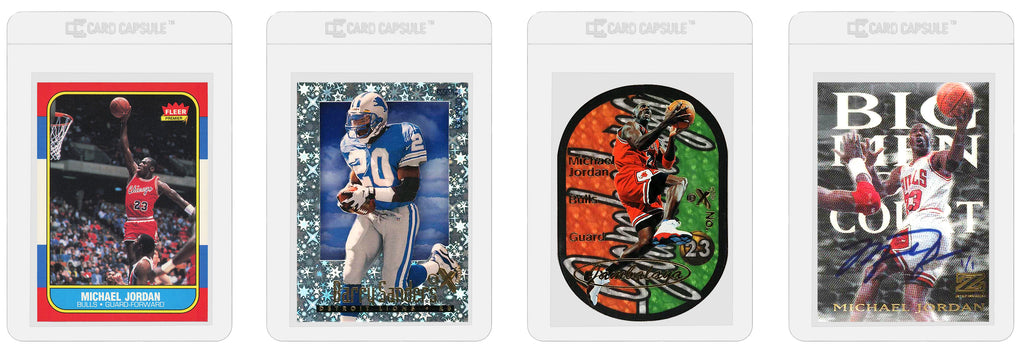As trading cards and collectibles continue to grow in popularity, the ways in which we store and protect them have become a topic of significant interest. Two primary methods have emerged as the protectors of choice for ungraded cards: semi-rigid card holders and toploaders. But what makes these options stand out, and why do grading companies have a preference for one over the other? Before you continue, view our semi-rigid card holders for ultimate protection during grading submissions.
Toploaders

Trading card toploaders are an industry standard and have served the needs of collectors for decades. As the name suggests, a toploader is a plastic card holders that allow sports cards to slide into the top of the holder, adding a layer of protection against general wear and tear. Toploaders are most commonly used for standard size trading cards but come in various gauges to fit cards of different thicknesses, measured in “points” or “pts” for short. Standard size trading cards have a thickness of 20pts, or 0.02 inches. Other, but less common sizes of cards are 35pt, 55pt, 75pt, 100pt, 120pt, 130pt, 180pt, 360pt. Once you know how thick your cards are, you will know exactly what size toploaders you need.
Toploaders offer an effective way to store and protect your cards, featuring a level of stiffness greater than that of semi-rigid holders, which ensures enhanced protection from bending. However, their rigid structure and top-loading design sometimes allow cards to slip out of the holder. This issue becomes especially concerning when toploader-encased cards are shipped, as they may fall out and get damaged during transportation. A popular workaround is to seal the opening of the holder with tape. While this approach addresses the problem, it often detracts from the holder's visual appeal.
Semi-Rigid Card Holders

Semi-rigid card holders have also been used for decades and are very popular among collectors, and for good reason. They are available in many different sizes, take up minimal space, and keep cards from shifting around, helping to prevent damage. The most common size are the standard holders, which measure 3 5/16" x 4 7/8" and have a 1/2” lip, making it extremely easy to insert and remove cards.
Almost all third-party grading companies (PSA, BGS, and SGC) actually require submissions to be shipped in semi-rigid card holders, and there is a reason for that. Semi-rigid holders do an excellent job at securing cards in place so they don’t shift around, while making it easy to remove cards without damaging them. In fact, PSA may reject your submission or upcharge you if cards are not packed in semi-rigid holders. Given this information, it is largely accepted that semi-rigid holders do a better job than top loaders at protecting sports cards (at least during shipping).
Conclusion
In conclusion, the decision between semi-rigid card holders and toploaders for protecting ungraded trading cards boils down to individual preference, the specific needs of the collector, and the requirements of grading companies. Toploaders, with their sturdy design, offer robust protection against bending and wear, making them a reliable choice for collectors who prioritize the physical integrity of their cards. However, their susceptibility to allowing cards to slip out, particularly during shipping, presents a notable drawback. On the other hand, semi-rigid card holders, favored by grading companies like PSA, BGS, and SGC, provide a secure and flexible solution that minimizes card movement and facilitates safe removal, addressing both the practical and aesthetic concerns of collectors. Ultimately, both storage options have their merits, and the choice between them should be guided by the collector's priorities, whether it's the level of protection, ease of handling, or compliance with grading submission standards. As the trading card and collectible market continues to expand, understanding these nuances will become increasingly important for enthusiasts looking to preserve the value and condition of their prized possessions.
Secure your collection with the best semi-rigid card holders today!



Leave a comment